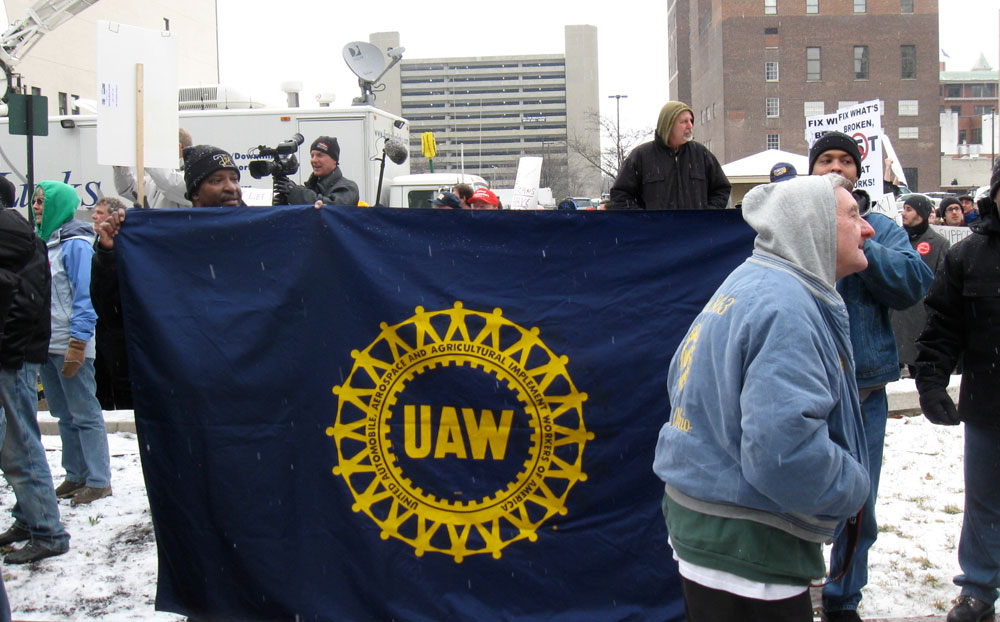
October 19, 2019; Washington Post and New York Times
Gary Zanetti, a General Motors worker, told Eli Rosenberg of the Washington Post that “since the last contract, [GM] made $40 billion” even as the firm shut down facilities at Lordstown, Ohio, and other plants in Michigan and Maryland. The strike, Zanetti added, “needed to happen.”
The union and the company have reached a tentative agreement that could end the five-week strike of 46,000 United Automobile Workers (UAW) members, although approval by rank-and-file workers remains uncertain, with final voting results not expected until Monday. Already, more than one million days’ worth of work have been lost. The strike, adds Rosenberg, is “one of the largest in the private sector in the last 20 years.” Economically, the strike has cost GM over $1 billion in profits. Workers have foregone an estimated $835 million in wages.
In the settlement, the union has made significant gains. “The tentative contract agreement addresses many of the central issues of the dispute,” Zanetti writes. Among these is the phase-out of a two-tier wage scale by 2023. But union negotiators have, in turn, conceded that though GM did commit to keep open a facility in Hamtramck, Michigan (near Detroit) that had been slated for closure, plants closed over the last year in Lordstown and elsewhere won’t reopen.
Sign up for our free newsletters
Subscribe to NPQ's newsletters to have our top stories delivered directly to your inbox.
By signing up, you agree to our privacy policy and terms of use, and to receive messages from NPQ and our partners.
Workers, if they approve the contract, would also get what the union touts as a “record ratification bonus” of $11,000 per worker, which left some rank-and-file workers unimpressed. Allan Vroman, a veteran GM employee who works at that Hamtramck facility, told Rosenberg, “The more money they throw at you, the more you get suspicious” of what contract provisions the company may have received in exchange for the one-time cash payment.
Despite the compromises that the tentative agreement contains, however, Rosenberg contends that the GM strike agreement is likely to encourage other workers to follow suit with strikes of their own. Of course, the GM strike itself is part of a rising wave of militancy, as NPQ has noted. After two decades when strikes were almost nonexistent, strike activity has returned to levels that would have been considered modest during much of the middle 20th century but which are exceptional by modern standards.
Josh Murray, a sociologist at Vanderbilt University, notes that strikes at one place often build on others. Indeed, the workers at GM themselves were motivated to strike in part due to the successes enjoyed among teachers’ unions over the past two years and this spring’s New England grocery worker strike. Murray tells Rosenberg, “In social movements, you see waves of working-class activity as people learn from each other.…Most working people aren’t against unions or having more money and benefits, but there’s a risk to doing those things. But as more and more of these things happen and people win, then more people get on board.” Indeed, just this week, another large strike, involving 25,000 teachers in Chicago, began and persists.
In addition to the demonstration effect of other strikes, structural factors are also driving this strike wave. As Noam Scheiber in the New York Times observes, “The backdrop for this trend is a rising gap between the money employers are making and the portion they’re sharing with workers. The share of the national income that workers receive fell in the early 2000s to its lowest level since World War II according to some measures, then collapsed further in 2009. It has yet to recover.”—Steve Dubb













